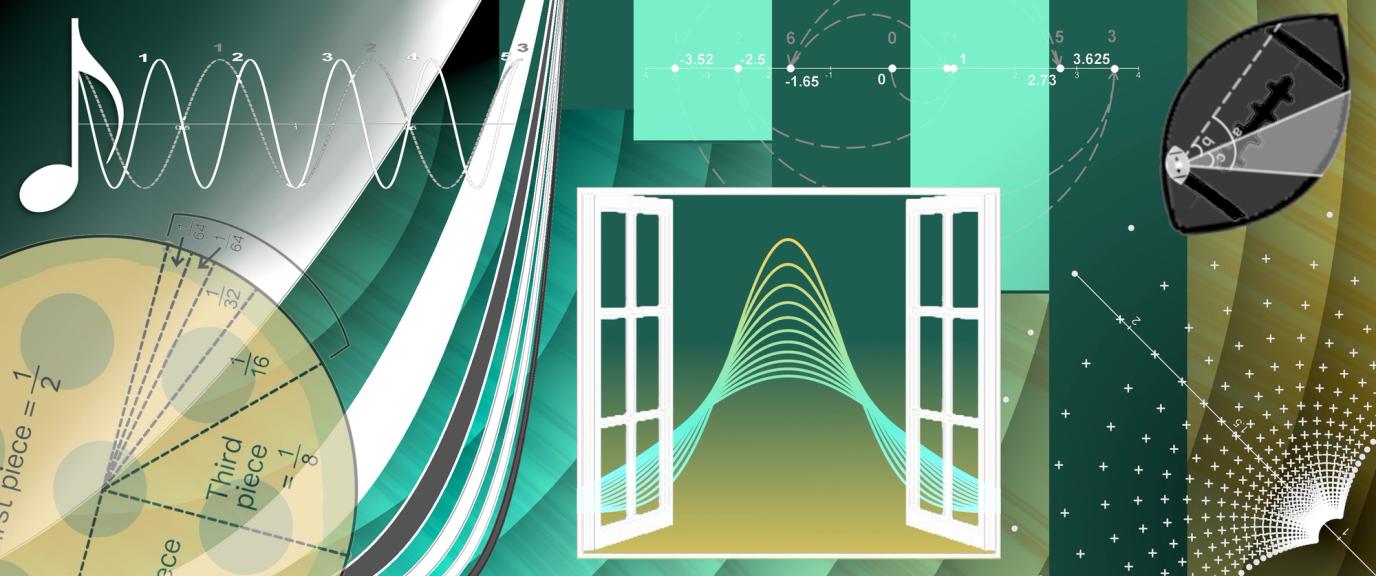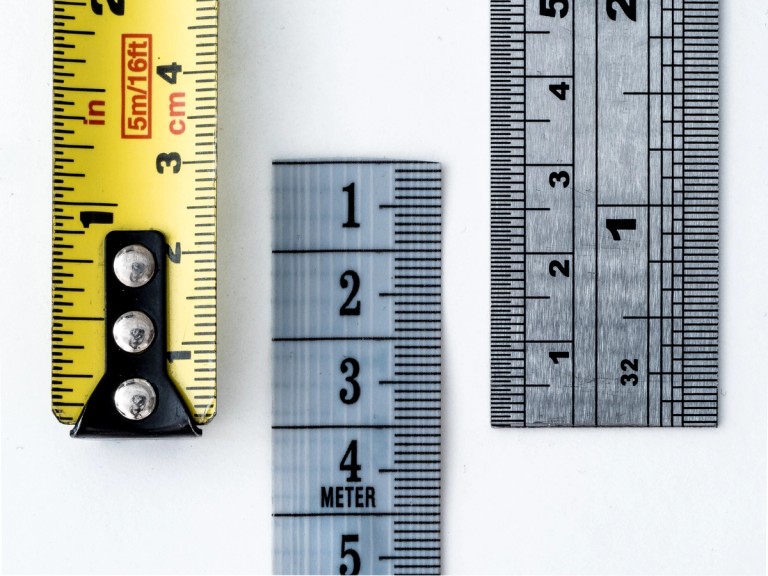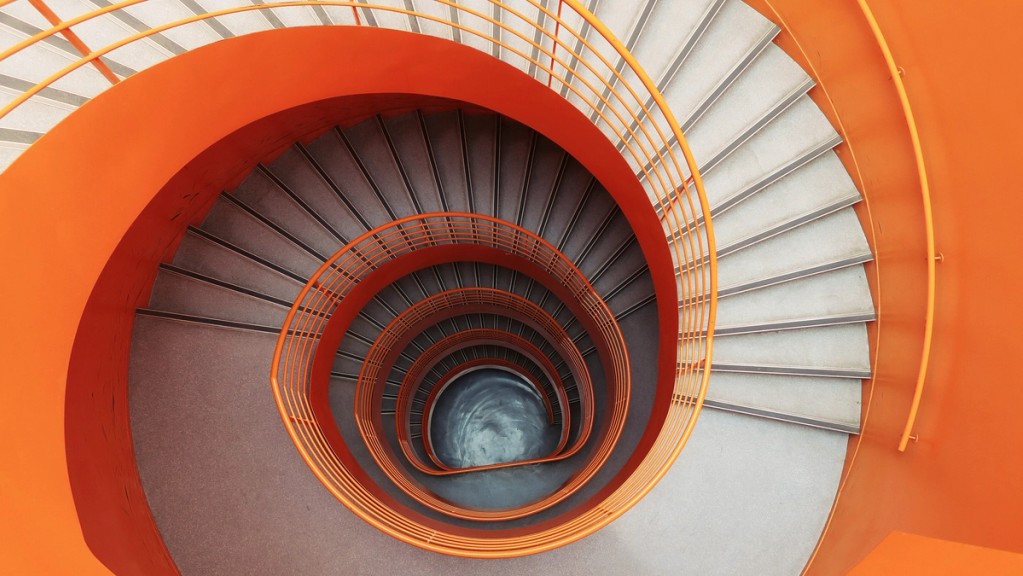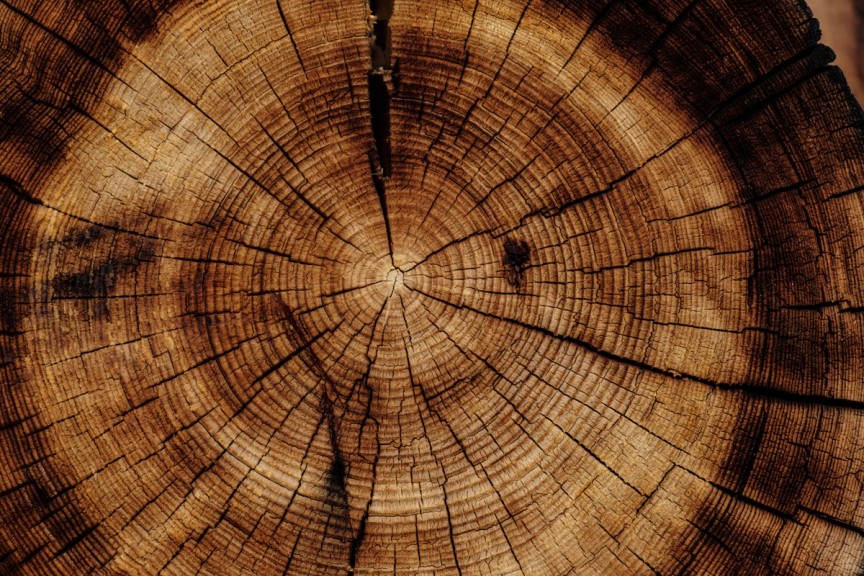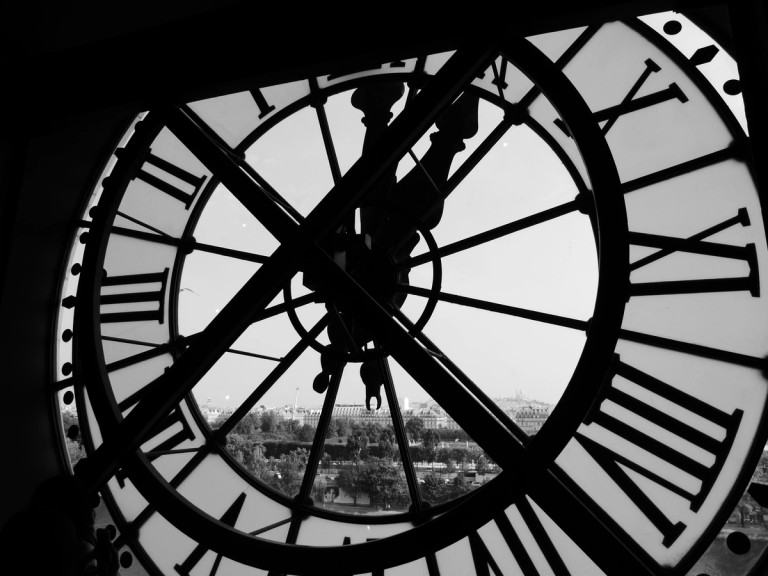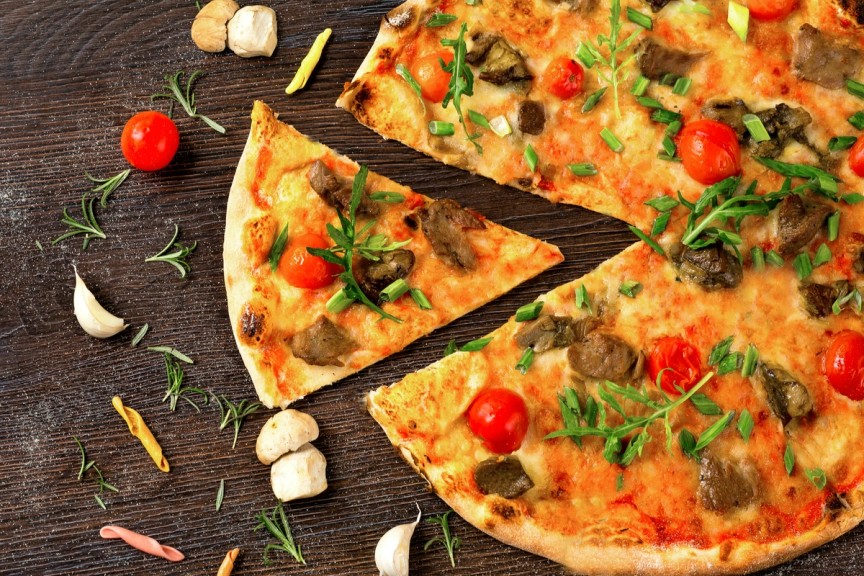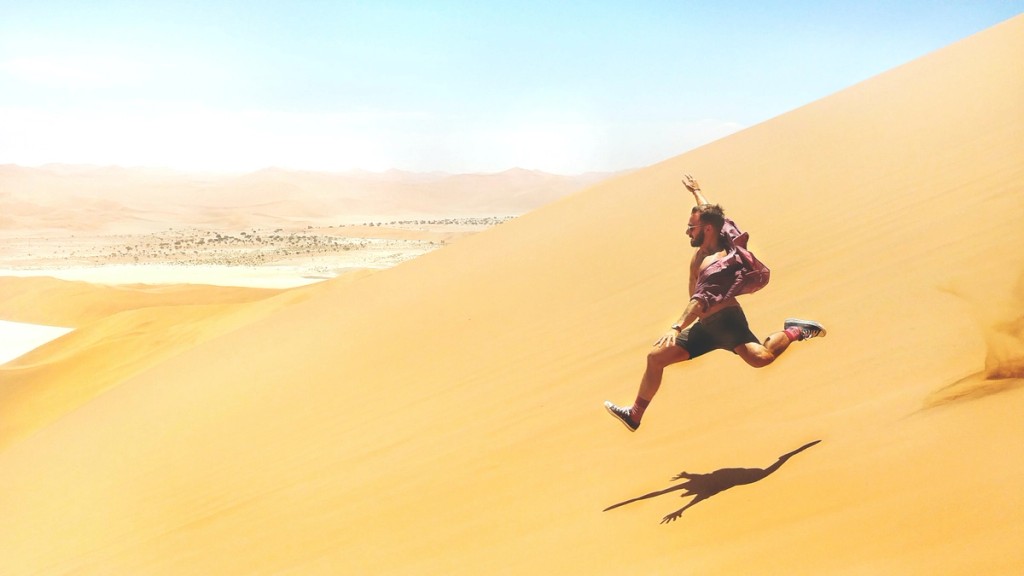“Geometry is knowledge of what always exists.” Plato
How to start
In the previous section, we made the giant leap into curved things and estimated by calculating the distance around the circle and dividing by the distance across the circle. I don’t think I can overstate how big of a step this was in math. Once math people got started measuring curved things, they did not stop, and the work of measuring curved things continues today. The number happened to be in the right place at the right time and became the hero in the story. Just like the internet was the tool that changed how we communicate, is the tool that changed how we measure curved things.
Next, let’s increase our dimension from one to two by measuring area rather than distance. That means we will tackle calculating the area of a circle.
Perhaps you recall the formula for the area of a circle is . First, let’s take a moment and appreciate how beautifully simple this formula is. One formula for all circles, regardless of size. Notice if the formula was , it would be the formula for a square with side length . But , standing in only at 3.14+, just a little short of 4, produces the perfectly curved feature of the circle rather than the rigid corners of a square. Here, in terms of beauty, less is more.
Also, try to appreciate the fact that actually appears in the formula for the area. We brought into the world as the ratio of the distance around divided by the distance across. To me, initially it’s not obvious that this constant we derived by measuring distance should also be part of the formula to calculate the area. But, after this section, we will have a better intuition why appears in the formula for the area of a circle.
Let’s try deriving the formula for the area of a circle. How would you begin?
Recall from the previous section when we measured the distance around, we started with something we knew how to calculate. We just mentioned comparing a circle to a square. Why not start there?

Figure 1. The area of a chessboard
Think of a square as a chessboard as in Figure 1. If we wanted to know the area of the chessboard, we could measure the area of one square of the chessboard and then count the squares. Since we don’t care about units, we can just define the length of a side of one square as 1. Then, the area of one square is . Thus, we can count the number of squares to calculate the area. If we count the number of squares on the top row, we count 8. We move to the second row and, not surprisingly, find there are 8 squares again since the rows line up nicely. Then, we notice we have or 16 squares in the first two rows.
We can move from addition to multiplication and also recognize this is or 16 since we have two rows of 8. With this wonderful insight, we just simplified the problem from counting all the squares to only counting the number of columns since this pattern continues for all rows. Count the number of squares going vertical and recognize it is 8 as well. Thus, the total area of the board is or 64.
Of course, all this only lathers us up to the big challenge of calculating the area of a circle. How do we make this giant leap? It doesn’t hurt to start with something familiar. What is something common that is circular? For me, the first thing that comes to mind is pizza.
Pizza time!
We’re only considering 2 dimensions, so let’s ignore the thickness of the pizza and focus only on the area of the top of the pizza. In our perfect world, we can imagine a 2-dimensional pizza that is perfectly round. I like using pizza as an example for a circle because I like pizzas. They are not meant to be left alone but to be cut and devoured.
Let’s call the outside of the circle the crust. If you want to use fancy math terms, we would say the crust of the pizza is the circumference. We can choose any size of a circle, so let’s choose a circle that has radius 4. That means the distance across the circle when we go through the center of the circle is 8. This is a nice distance because it is consistent with our chessboard. Let’s plop our pizza on our chessboard in Figure 2.

Figure 2. The area of a circle
Since our goal is to calculate the area of a circle, clearly, we have a problem. We can count some of the squares that are completely within the circle. But there are many squares that are partially in and partially out. We could try estimating the area of each partial square to arrive at an approximate total, but that seems to go down the path of ugly math, which we try to avoid. Let’s follow another path.
Since we have what appears to be a difficult problem, you might think we need a very complicated solution. Actually, we can just do what we normally do with pizza, which is cut it. Cutting the pizza makes it easier to share and easier to eat. Likewise, this area problem is too big to solve in one piece, so let’s try cutting the pizza into something we can manage.
How would you cut the pizza? There are many ways, but the way I usually cut a round pizza is to make cuts through the center. If I want equally sized pieces for all, I’ll make my cuts symmetrical. Let’s start by cutting the pizza into 4 pieces, which only requires two cuts: one north to south and the other east to west. Figure 3 shows how the cuts may appear.

Figure 3. Cutting a pizza into equal parts
Notice cutting the pizza does not change the area of the pizza. Also, we can move the pieces around however we wish. Moving the cut pieces does not affect the area, only the presentation. Now that the pizza is cut, we are free to arrange the pieces in any order we wish.
What is one way we could arrange the pieces so that it would be easier to calculate the area? We know how to calculate the area for a square. Also, with a little more thought, we could expand to other simple straight objects like a rectangle or triangle. Let’s consider how to arrange the pieces into a shape for which we can calculate the area.
Arrange the pizza
This is the difficult part of the problem and one where we need to pivot. Let’s stir our imagination and let it roam.
Consider taking two of the slices and arranging them side by side, touching at one point and pointing in the same direction. Then, arrange the other two pieces similarly but pointing in the opposite direction. Notice we can fit them tightly together as illustrated in Figure 4.

Figure 4. Rearranging the cut pizza.
Is this progress? Notice we have 2 parts that are straight, and we are working toward straight edges. Still, we have the curves of the crust on the top and bottom. But we remember from the previous section that the way to remove curves is to continue to slice and dice. If we think we have something good, we should try it again. So let’s make two more symmetrical cuts to create 8 slices and arrange the slices using the same strategy as you see in Figure 5.

Figure 5. Repeating the process with 8 pieces.
Wow, this looks promising! We have stumbled onto something potentially beautiful, or at least, creative. The curves of the crust are less curvy, so the top and bottom are becoming more like the top and bottom of a rectangle. The sides are straight, which is what we need, but they are slanted. However, they are less slanted than before. We like where this is going, so let’s repeat and make 4 more cuts to double the pieces from 8 to 16 in Figure 6.

Figure 6. Removing the curves from a circle.
This is definitely progress. Let’s jump forward to repeating this twice, going from 16 to 64 pieces where all pieces are the same size. Can you imagine what this will resemble?

Figure 7. The pizza is almost rectangular
The shape at the top of Figure 7 retains a slight slant to the sides, but the curves of the crust have essentially disappeared. This story is quickly moving to a happy ending. But, like a typical Hallmark love story, there’s a “mess” that is about to happen. No, not an old flame reappearing. The mess here is that no matter how many times we perform this operation, we will never get a true rectangle, only an approximation. Right now, we already have a messy pizza with the pieces so small we’re not sure whether we can even make another cut. We must ask the difficult question: can we get to the finish line or are we stuck with a messy approximation?
This is where calculus saves the day; it comes and rescues us from this mess. The math that you and I can see and touch is done. But math goes beyond things we can see and touch. The specific math we need now lives in calculus. Calculus brings in an amazing tool called a limit. What this limit tool does is it lets us continue this process, essentially forever, until the number of pieces approaches infinity and the size of each piece approaches 0. Remember we used the limit magic when we calculated by assuming time got very short and the number of compounding periods got very large.
We have the same concept here. Now, the slices of pizza are getting smaller and the number of cuts is getting larger. When we call on the powers of a limit, this process produces a perfect rectangle. We’re stretching our imagination here because we are performing an infinite number of cuts to create slices of pizza that are “infinitesimally small” that we magically seam together. In the real world, this is not possible. But, in our world of imagination, what results is a perfect rectangle as illustrated in Figure 8.

Figure 8. A limit produces perfectly straight lines
You may wonder how this limit stuff works. This seems like crazy made-up math. Perhaps. But this crazy made-up math is based on sound logic and reason. It is what many study in college, especially if they want to do anything with math.
Earlier in Lazarus Math we referred to the concept of “approaching.” The concept of “approaching” is part of a bigger calculus idea of a limit. It is this big idea of a limit that allows us to safely transition from things we count to things we measure. I don’t want to give any impression that this limit stuff is easy, or even intuitive. Calculus was invented/discovered in the 17th century. But it wasn’t until 200 years later that Augustin-Louis Cauchy (1789−1857) formulated the concept of a limit. If you happen to study calculus and the limit, realize it required hundreds of years and some of the greatest math minds ever to formulate the ideas you read in likely only a few pages of your calculus textbook.
Alright, let’s finish our problem. After we allowed for the limit of this cutting and arranging to occur, what is the area of this rectangle?
Calculating the area
You may recall the area of a rectangle as the length of the base times the height. First, what is the height of our rectangle?
Remember how we created the rectangle? We arranged slices and merged them together like a jigsaw puzzle, where each slice was a cut of the pizza. But it wasn’t a cut from one end of a crust to the other. Rather, the slice ended halfway across. Thus, the height of the rectangle is the distance from the center of the pizza to the crust, which we call the radius. That means the height of the rectangle is the radius.
Good. But what is the width of the rectangle? The width is the length of the top or the bottom, whichever we prefer. Again, remember how we cut each slice and how the slices were organized. It may help to return to 4 slices in Figure 9.

Figure 9. Finding our dimensions
Notice the top and the bottom represented the crust of the pizza. We know the length of the entire crust is the distance around the circle, or the circumference. Recall from the previous section that the distance around the circle is two times the radius times .
Since we have symmetry, the length of one side is half this distance, which is . Now, we know the length, , and the height, . Since the area is length times height, the area of our rectangle is . Because arranging the pieces did not change the original area, the area for the pizza is also . We just derived the area for a circle doing not much more than thinking about how we would eat a pizza and arrange the slices.
If we want, we can take a small step further to calculate the area of our pizza with radius 4. The area is or about 50.27. As we expect, this is less than the area for the chessboard square, which is 64.
Was that as thrilling for you as it was for me? What was a complete mystery before, how we calculate the area of a circle, is no longer as mysterious. This is the type of hidden order in math that is beautiful and worth sharing. A circle appears quiet and unassuming but it has beauty and symmetry.

